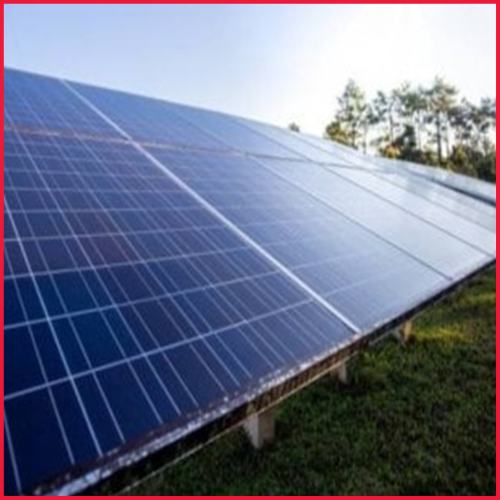Fuel Cell electric vehicles (FCEVs) are controlled by hydrogen. They are more effective than ordinary gas-powered motor vehicles and produce no tailpipe discharges — they just radiate water fume and warm air. FCEVs and the hydrogen foundation to fuel them are in the beginning phases of execution. The U.S. Division of Energy leads research endeavors to make hydrogen-controlled vehicles a reasonable, harmless to the ecosystem, and safe transportation choice. Hydrogen is viewed as an elective fuel under the Energy Policy Act 1932 and meets all requirements for elective fuel vehicle tax reductions.
Could you trust it if vehicles could create energy, and utilize the specific energy delivered to assist with saving the climate – at the same time? The Fuel Cell Electric Vehicle (FCEV) gives simply that. The vehicle involves hydrogen as a wellspring of energy to create power from its power device framework, permitting the vehicle to become discharge free. Besides the fact that the vehicle radiates unadulterated water (H2O) in creating power, it likewise channels ultrafine dust from the air when driven. This crucial quality of the FCEV has drawn a lot of consideration from people in general as the future eco-accommodating portability. Taking into account the way that hydrogen is the most plentiful component on Earth and that the energy creation process itself is profoundly eco-accommodating, Hyundai Motor Group accepts that this innovation can essentially affect our way of life concerning supportability.
Energy unit electric vehicles are fueled by the most plentiful component known to man: hydrogen. Albeit an energy unit vehicle runs on power, it does so any other way than battery-controlled or module cross-breed vehicles. In an energy component, hydrogen responds electrochemically to deliver power to control the vehicle.
The energy unit electric drive framework is a practical and alluring innovation for versatility with zero nearby emanations.
A power module electric vehicle is an electrically determined vehicle where power is produced by a power module involving hydrogen as an energy source. The electric drive changes over the energy into movement. On the other hand, this energy can be briefly put away by the footing battery.
This sort of drive framework isn’t just utilized for ghetto driving; as a matter of fact, it is most noteworthy while concealing longer distances to a scope of a few hundred kilometers. Power module electric vehicles likewise win over their short topping-off seasons of only a couple of moments.
What is a fuel cell electric vehicle?
FCEVs utilize an impetus framework like that of electric vehicles, where energy is put away as hydrogen is switched over completely to power by the energy component. Dissimilar to ordinary gas-powered motor vehicles, these vehicles produce no unsafe tailpipe emanations.
Different advantages incorporate expanding U.S. energy versatility through variety and fortifying the economy.
Power module vehicles can convey sufficient hydrogen fuel for 300-400 miles of reach and their tanks can be topped off as fast as that of a standard vehicle’s fuel tank. Current rent bargains frequently incorporate as long as three years of free fuel. At the siphon, hydrogen sells for significantly more than gas, in any case, an energy component vehicle goes about two times similar to a customary vehicle on a comparable measure of fuel.
FCEVs are energized with unadulterated hydrogen gas put away in a tank on the vehicle. Like ordinary gas-powered motor vehicles, they can fuel in under 4 minutes and have a driving scope of the north of 300 miles. FCEVs are furnished with other cutting-edge innovations to increment proficiency, for example, regenerative stopping mechanisms that catch the energy lost during slowing down and store it in a battery. Significant automakers are offering a restricted yet developing number of creation FCEVs to general society in specific business sectors, in a state of harmony with what the creating foundation can uphold.
How do Fuel Cells work?
The most well-known kind of energy unit for vehicle applications is the polymer electrolyte film (PEM) power device. In a PEM power module, an electrolyte film is sandwiched between a positive terminal (cathode) and a negative anode (anode). Hydrogen is acquainted with the anode, and oxygen (from the air) is acquainted with the cathode. The hydrogen atoms fall to pieces into protons and electrons because of an electrochemical response in the energy unit impetus. Protons then go through the film to the cathode.
The electrons are compelled to go through an outer circuit to perform work (giving the capacity to the electric vehicle) and afterward recombine with the protons on the cathode side where the protons, electrons, and oxygen particles consolidate to shape water.
Energy component vehicles are controlled by packed hydrogen gas that feeds into a locally available power device “stack” that doesn’t consume the gas, however, rather changes the fuel’s substance energy into electrical energy. This power then drives the vehicle’s electric engines. Tailpipe outflows are zero, and the main waste delivered is unadulterated water.
The development of the energy unit is like a battery. Hydrogen enters the anode, where it interacts with an impetus that advances the partition of hydrogen iotas into an electron and proton. The electrons are accumulated by the conductive current authority, which is associated with the vehicle’s high-voltage hardware, taking care of the installed battery as well as the engines that turn the wheels.
1. Fuel Cell Stack – A total of various power modules that consolidate oxygen and hydrogen to produce power and power the electric engine
2. Fuel Tank – Hydrogen gas is put away in carbon-fiber supported tanks to give fuel to the power module stack
3. Electric Motor – Powers the vehicle utilizing energy created in the power module stack
4. Battery – Captures energy from regenerative slowing down and gives the extra capacity to the electric engine
5. Exhaust – The result of the response happening in the power module stack is a water fume, which is discharged through the exhaust
How Do Fuel Cell Electric Vehicles Work Using Hydrogen?
Like every single electric vehicle, energy component electric vehicles (FCEVs) use power to control an electric engine. As opposed to other electric vehicles, FCEVs produce power utilizing an energy unit controlled by hydrogen, instead of drawing power from just a battery. During the vehicle configuration process, the vehicle maker characterizes the force of the vehicle by the size of the electric motor(s) that gets electric power from the suitably estimated energy component and battery blend. Although automakers could plan an FCEV with module abilities to charge the battery, most FCEVs today utilize the battery for recovering slowing down energy, giving additional power during short speed increase occasions, and streamlining the power conveyed from the power module with the choice to sit or switch off the power module during low power needs. How much energy is put away is not entirely settled by the size of the hydrogen gas tank. This is not quite the same as an all-electric vehicle, where how much power and energy are accessible are both firmly connected with the battery’s size.
Key Components of a Hydrogen Fuel Cell Electric Car
Battery (helper): In an electric drive vehicle, the low-voltage assistant battery gives the power to begin the vehicle before the foothold battery is locked in; it likewise controls vehicle extras.
Battery pack: This high-voltage battery stores energy created from regenerative slowing down and gives the supplemental capacity to the electric foothold engine.
DC/DC converter: This gadget changes over higher-voltage DC power from the footing battery pack to the lower-voltage DC power expected to run the vehicle frill and re-energize the assistant battery.
Electric footing engine (FCEV): Using power from the energy component and the foothold battery pack, this engine drives the vehicle’s wheels. A few vehicles utilize engine generators that perform both the drive and recovery capabilities.
Energy component stack: A gathering of individual film cathodes that utilize hydrogen and oxygen to create power.
Fuel filler: A spout from a fuel gadget joins the repository on the vehicle to fill the tank.
Gas tank (hydrogen): Stores hydrogen gas locally available in the vehicle until it’s required by the power module.
Power hardware regulator (FCEV): This unit deals with the progression of electrical energy conveyed by the energy unit and the foothold battery, controlling the speed of the electric foothold engine and the force it produces.
Warm framework (cooling) – (FCEV): This framework keeps a legitimate working temperature scope of the energy unit, electric engine, powerful hardware, and different parts.
Transmission (electric): The transmission moves mechanical power from the electric footing engine to drive the wheels.
Green Technologies: Electric Cars with Hydrogen Fuel Cells
Quite a while back, Swiss specialist François Isaac de Rivaz concocted a gas-powered motor that involved a combination of hydrogen and oxygen as fuel. Yet, the vehicle he intended to go with it was a disappointment. The primary electric vehicles were created approximately 25 years after the fact, some time before Messrs. Daimler, creator of the cutting-edge gas motor in 1885, and Benz, the beneficiary of patent DRP 37435 for a gas-filled vehicle in 1886, went along.
At the turn of the twentieth century, electric vehicles were more famous than fuel-controlled models, for much the very reasons that shoppers are requiring another glance at electric vehicles today: they didn’t produce harmful exhaust, are hushed up, smoother, and simpler to drive. So, for what reason did the more-dirtying gas-controlled vehicles assume control over the market? A few variables became possibly the most important factor.
Henry Ford, good roads, cheap gas
“I will construct a vehicle for the extraordinarily large number,” pronounced Henry Ford in 1903. Thus, he did: the Model T, with a gas-powered motor that burned gas, was delivered in 1908, selling for US$950. During its 19 years underway, its sticker price would fall as low as US$280. No other vehicle could contend – not to mention electric vehicles, which, when at their top in 1912, sold on normal for US$1,950. The issue at hand was obvious to everyone.
Electric vehicles likewise missed out as a result of their restricted reach. At the turn of the 100 years, this had not been an issue, as the main reasonable streets for driving were in towns. In any case, after the First World War, countries began to fabricate expressways and streets to associate their towns. Vehicle proprietors before long needed to branch out farther than the electric vehicles could take them.
The disclosure of copious raw petroleum assets scaled down the cost of petroleum, making fuel more reasonable. Yet, electric vehicles didn’t vanish – nor did the utilization of hydrogen as fuel. They just became dim of the mass awareness until the 1970s gas emergency and ecological worries took them back to the front.
Clean energy
The present gas-powered motors can be promptly changed over completely to run on different energies, including hydrogen. Be that as it may, hydrogen energy units used to control vehicles with electric engines are a few times more effective than gas-fuelled gas-powered motors. Also, they have zero emanations and, because they do have not many complex components, are peaceful and sans vibration.
Hydrogen is perhaps of the most copious component known to man. It tends to be extricated from gaseous petrol, coal, unrefined petroleum, and so on, yet water is the main contamination-free wellspring of hydrogen. The hydrogen and oxygen iotas in water can be effectively and neatly split separated by electrolysis, preferably utilizing power from clean sources, like sunlight-based chargers and wind turbines. The subsequent hydrogen can be compacted for capacity and use in energy components.
It was a Welsh physicist, William Grove, who in 1842 imagined the principal straightforward hydrogen power device. Forest recombined hydrogen with oxygen – the converse of the course of electrolysis – to deliver power with just unadulterated water as a side-effect.
Francis Bacon, a substance engineer at Cambridge University in the U.K, whose interest was provoked when he read the papers distributed by Grove exactly 100 years sooner, emphatically progressed the innovation during the 1950s. Pratt and Whitney authorized Bacon’s energy component licenses during the 1960s and further fostered the innovation for use by NASA – a similar energy component could give power to in-flight power, intensity and clean drinking water for the voyage on board space makes. The Apollo, Gemini, and all resulting NASA missions, including the space transport, utilized energy units. Woods’ innovation had grown up.
Various organizations established after the oil emergency of the 1970s put together their plans of action for the hydrogen power device as a spotless wellspring of sustainable power, involving Grove’s paper and Bacon’s patent data as the beginning stage for their exploration. Specialists are currently dealing with many kinds of power devices, as shown in large numbers of global patent applications documented under the Patent Cooperation Treaty (PCT) for energy unit-related developments throughout recent years.
During the 1990s, an examination group at Ballard Power Systems in Canada made a significant advancement when they found a method for expanding the power thickness of hydrogen, increasing the normal figure from 200 Watts/liter to exactly 1,500. Utilizing Ballard’s PEM power module innovation, a vehicle with an engine of comparative size to that of a gas vehicle can match it in execution – going from nothing to 100 km/hour in 15 seconds, with maximum velocities around 150 km/hour. The innovation is additionally suitable for private use – power and warming – or as reinforcement power applications.
Fill her up: Compressed hydrogen
Daimler Chrysler, Ford, Honda, General Motors, Mazda – these large vehicle organizations have created power module idea vehicles, some of which have been conveyed to clients for preliminary. In 2003, a group from Daimler Chrysler crossed the U.S. in 12 days with the power device NECAR 5, arriving at a record speed of 160 Km/hour and demonstrating that energy component vehicles could go all the way. Mazda began renting power module RX-8s to business clients in Japan in mid-2006, making it the principal maker to place a hydrogen vehicle in clients’ grasp.
Refueling right now stays an issue for clients, except if they live in California, which intends to fabricate 150 to 200 hydrogen-powering stations by 2010. Various vehicle organizations plan to handle the issue by giving purchasers home hydrogen refueling units. Honda as of late divulged the third era of a home unit planned related to U.S. energy component organization Plug Power Inc. Furthermore, GM, whose Vice Chairman Bob Lutz accepts energy components could make another brilliant age for the organization, plans to deliver a home model, which would make hydrogen either from power or daylight, in 2011. This year, GM intends to put 100 hydrogen power module Chevrolet Equinox SUVs for preliminary with purchasers.
Looking good
François Isaac de Rivaz’s vehicle flopped because of its unfortunate plan. Yet, a look at the energy unit vehicles in these pages shows that makers are presently definitely cognizant of the essential significance of a good plan. Their eco-accommodating qualifications might win purchasers’ psyches however a decent plan will prevail upon them.
The ENV Bike from Intelligent Energy Ltd. won an IDEA gold honor for the plan in 2006 (see WIPO Magazine issue 5/2006 – News Round-Up). It was worked starting from the earliest stage to exhibit the utilization of hydrogen energy units, is quiet, and has a maximum velocity of 80 km/hour. Shrewd Energy plans to make the bicycle accessible to purchasers in mid-2007 for under US$10,000. The Company began involving the PCT in 2003 and has ten distributed global patent applications for their energy component innovation, including “Center,” a compact hydrogen power device that can be utilized in the ENV Bike, to drive a boat or a little house.
On the road again
In a new public statement, the public authority of Brazil reported that São Paulo, one of the world’s most dirtied urban communities, which likewise has the world’s biggest metropolitan transport armada, would begin working up to five hydrogen power device kinds of transport in November 2007. The US$16 million undertaking is upheld by the United Nations Development Program (UNDP), the Global Environmental Facility (GEF), and the Financing Agency of Studies and Projects (FINEP). The undertaking targets are:
. To foster a zero-emanation public transportation arrangement;
. To fabricate a comprehension of the power module and hydrogen innovation, empowering Brazil to get the main position, because of its expected market;
. To attempt to foster skill and information in Brazil with the target of making a business opportunity for hydrogen and power device advances; and
. To foster Brazilian details for the protected and effective creation, taking care of, fixed and auto applications, empowering the advancement of protected and proficient utilization of hydrogen.
St Nick Clara, USA, Perth, Australia, Beijing, China, and ten European urban areas as of now have hydrogen power device transports going through preliminaries in their public transportation frameworks. The outcomes so far are positive. The three kinds of transport working in Perth since September 2004 have been running over eight hours per day, five days every week. Says transport driver Paul Wroblewski, “Travelers have been extremely enthused about the new power device transports. The quietness inside the transport has permitted me to hear a few exuberant conversations about the innovation and their recently discovered information.”
Conclusion
Work is continuing to foster less expensive energy components that meet or beat the presentation particulars for the applications in which they are being utilized. Specialists as of late declared an elective technique for making hydrogen straightforwardly from daylight and water through a metallic impetus, which might give a practical, direct change of sunlight-based energy into hydrogen. Researchers are additionally exploring metal hydrides and translucent materials as answers to capacity issues. Metal hydrides come about because of consolidating unadulterated hydrogen with unadulterated or alloyed metal and granting a higher stockpiling thickness of hydrogen than pressure.
In a moderately brief time frame, exploration and human resourcefulness have created what was a hopeless innovation into a potential answer for the sustainable power issue, giving spotless and appealing vehicles.














